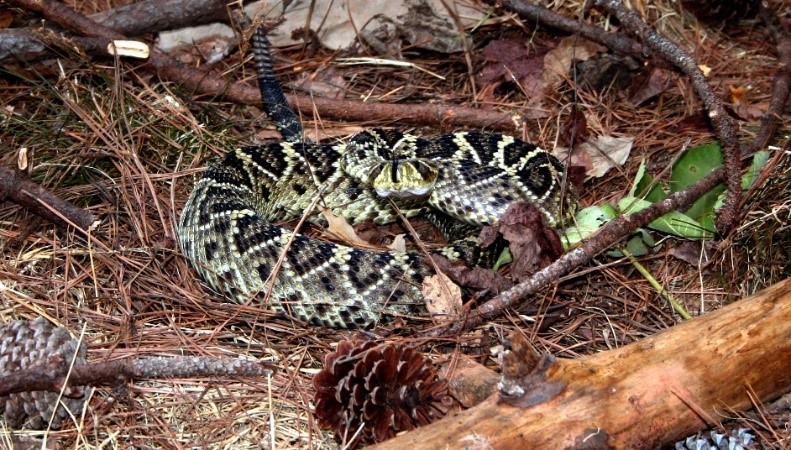Introduction
What connection does a rattlesnake and the cardiovascular system have?
If you ever encounter one of these diamondback rattlesnakes of Alabama and get bitten by its envenomating fangs, you will unfortunately discover this connection.

Rattlesnake in the woods.
Rattlesnake venom is hemotoxic, meaning it causes destruction of red blood cells that carry oxygen to tissues in your body. This venom will also inhibit platelet function, which disrupts the blood's ability to clot. This results in local or even system-wide hemorrhaging, or uncontrolled bleeding. The result is a loss of a limb or even death.
Therefore, always be aware of your surroundings when walking in the woods.
Watch this video about rattlesnakes (01:43) and what measures to take if bitten by a rattlesnake.
After the video, let's learn more about the blood.
| Lesson Objectives |
|
Following successful completion of this lesson, students will be able to...
Enduring Understandings
The above objectives correspond with the Alabama Course of Study: Anatomy and Physiology standards: 7 |
